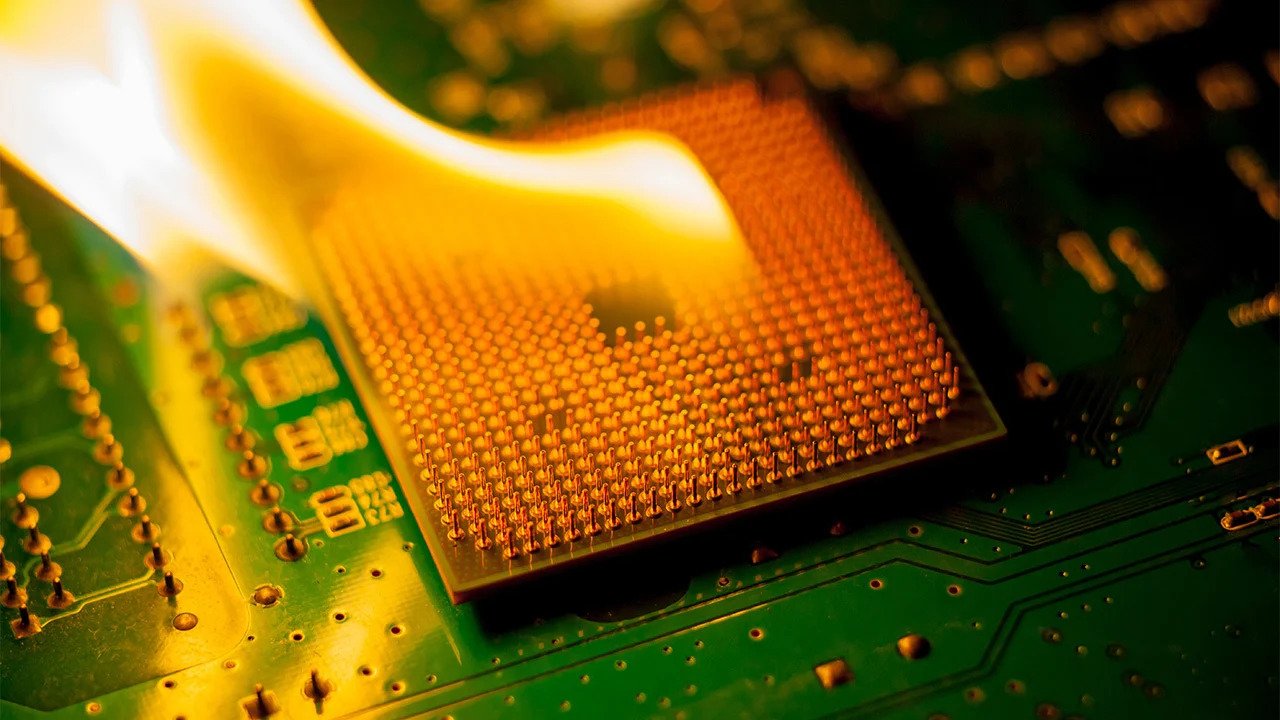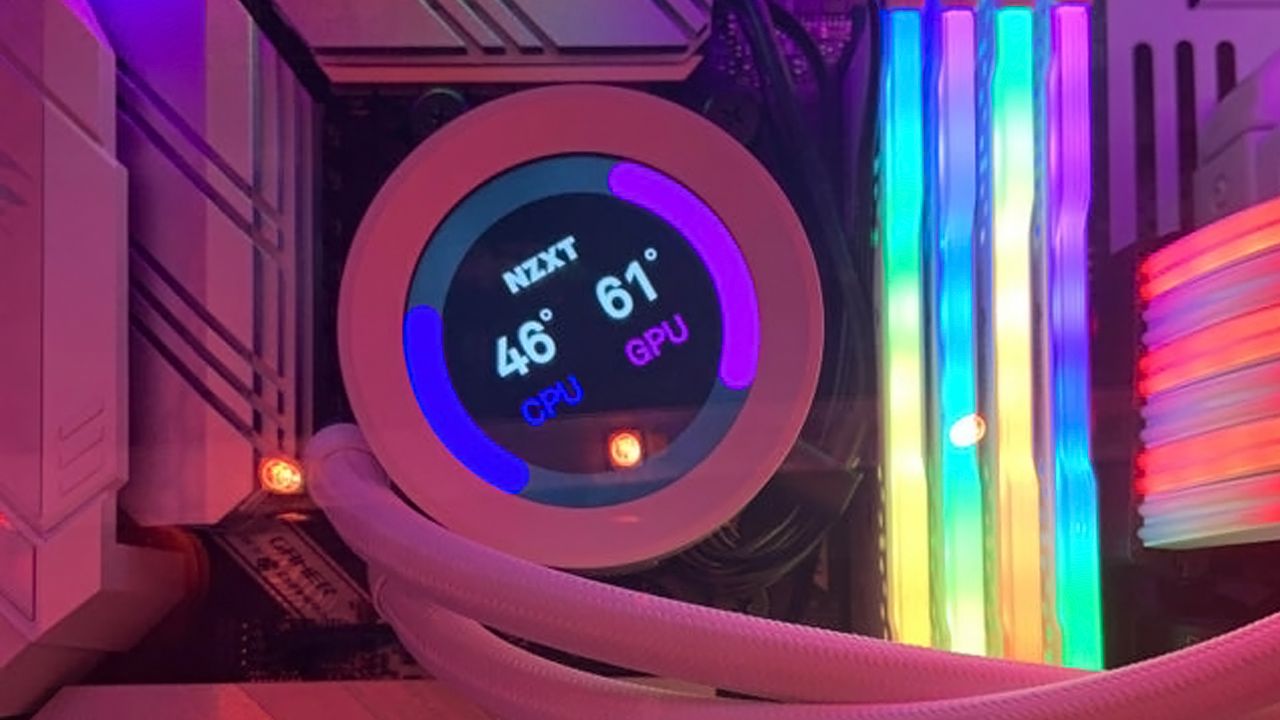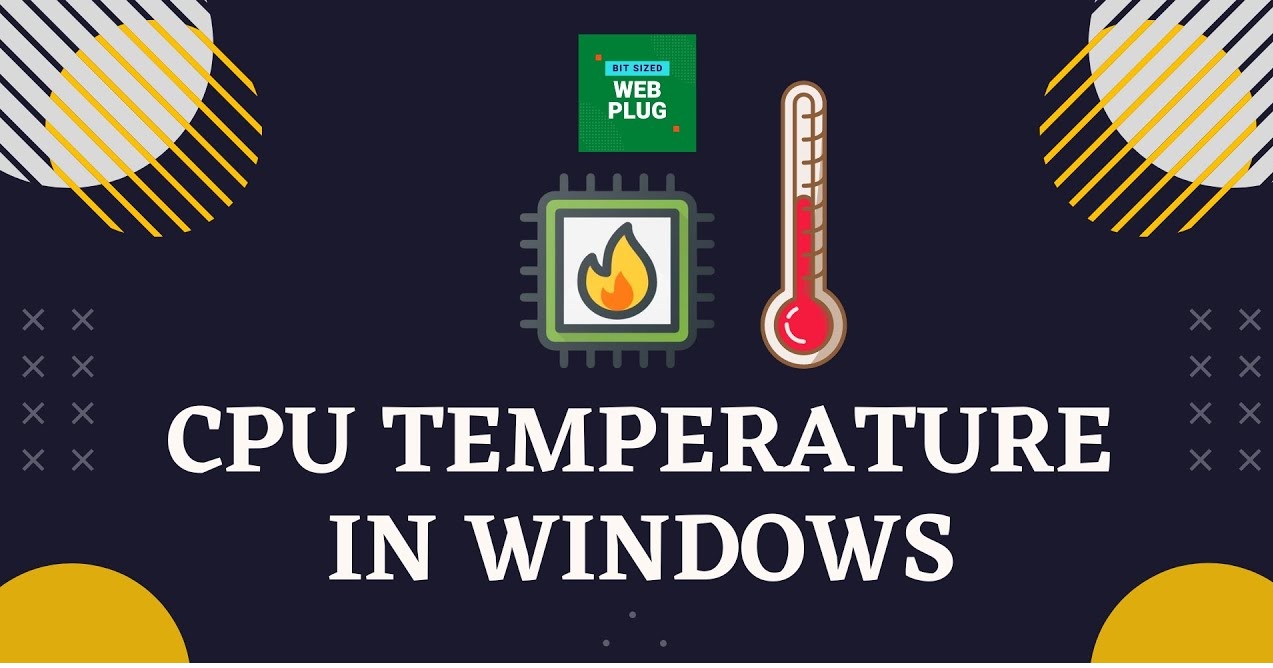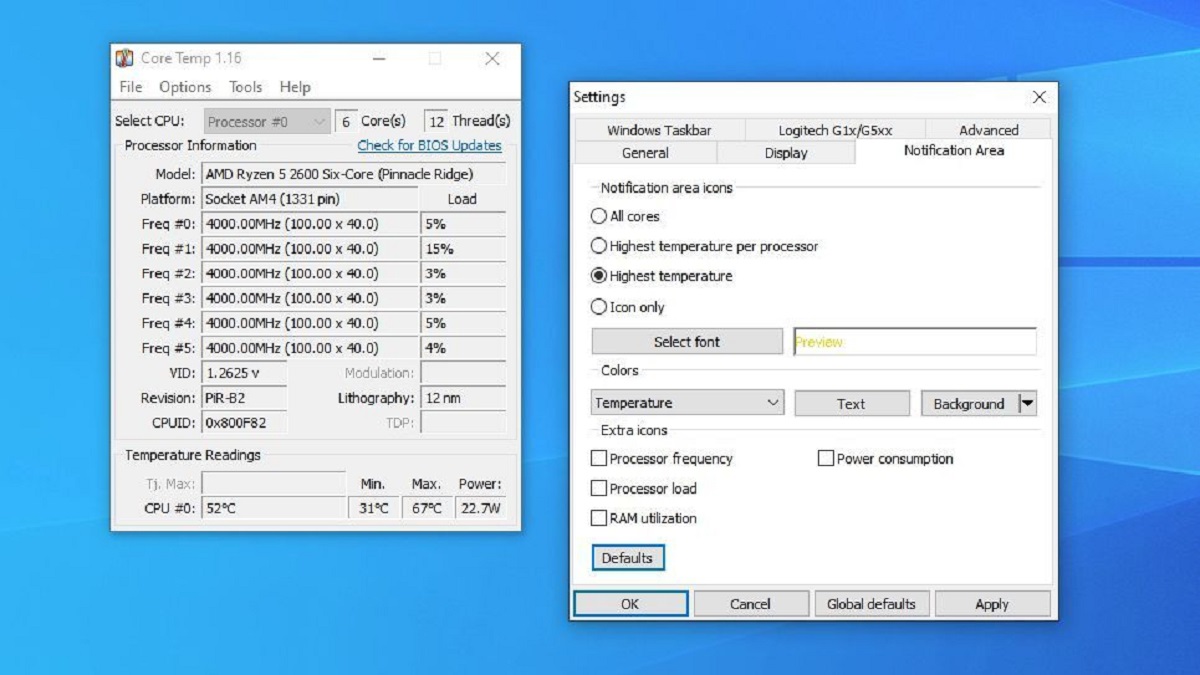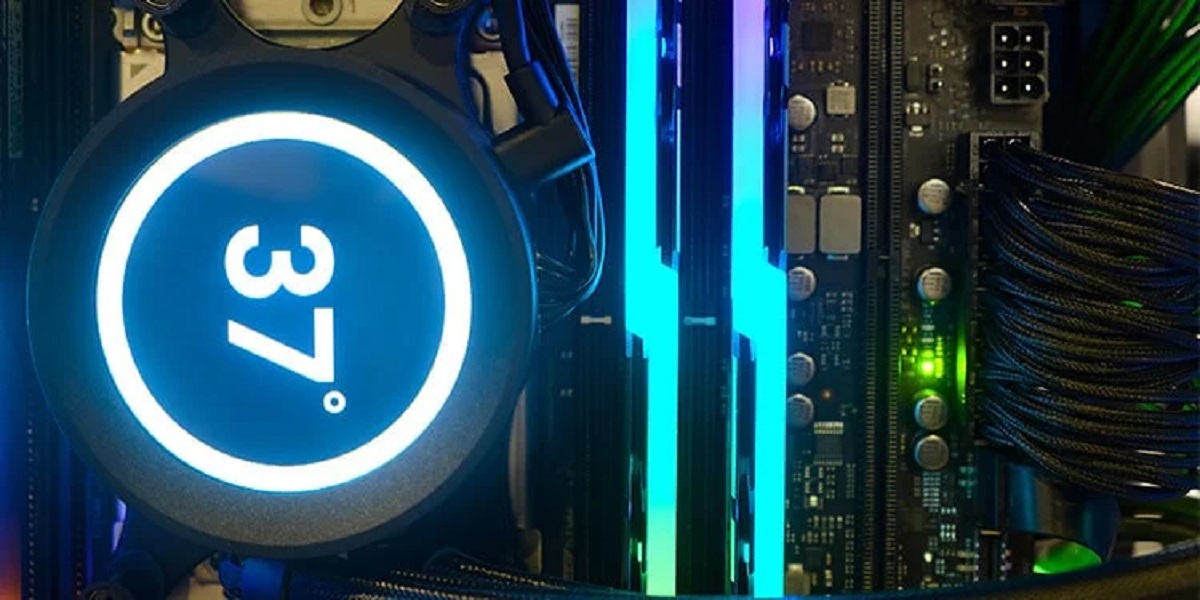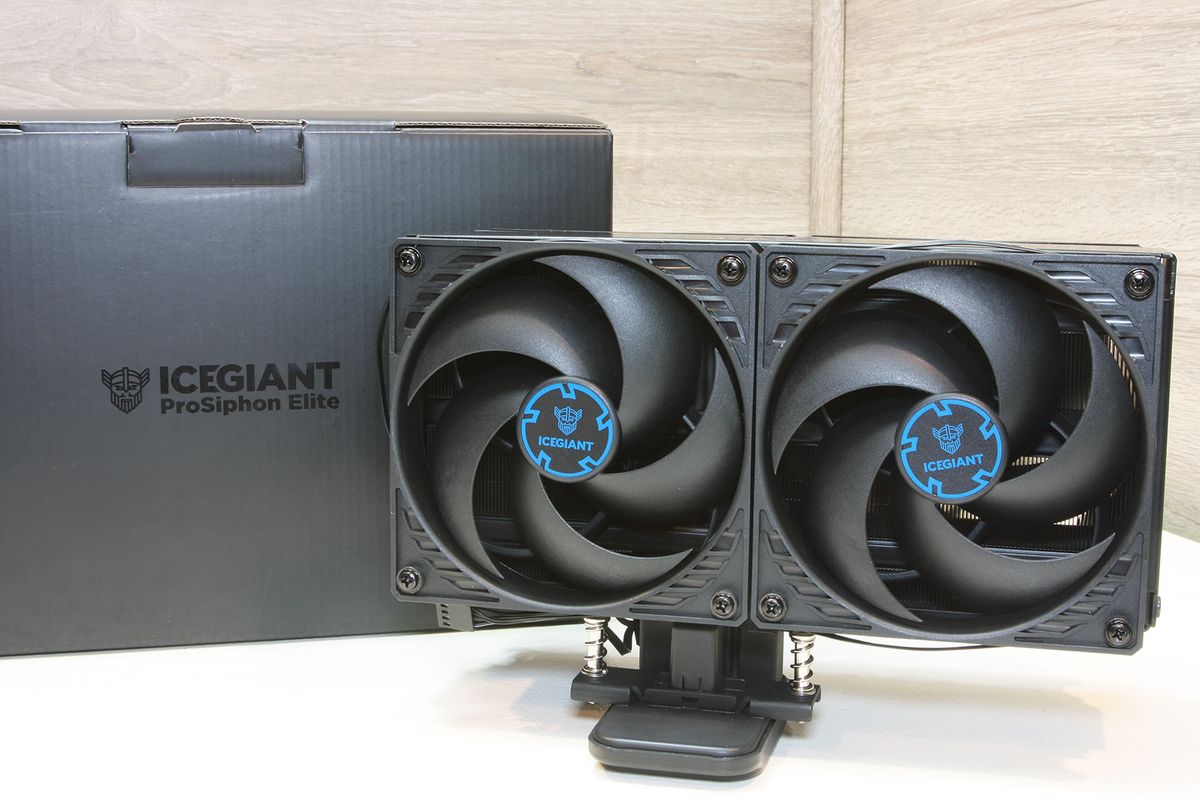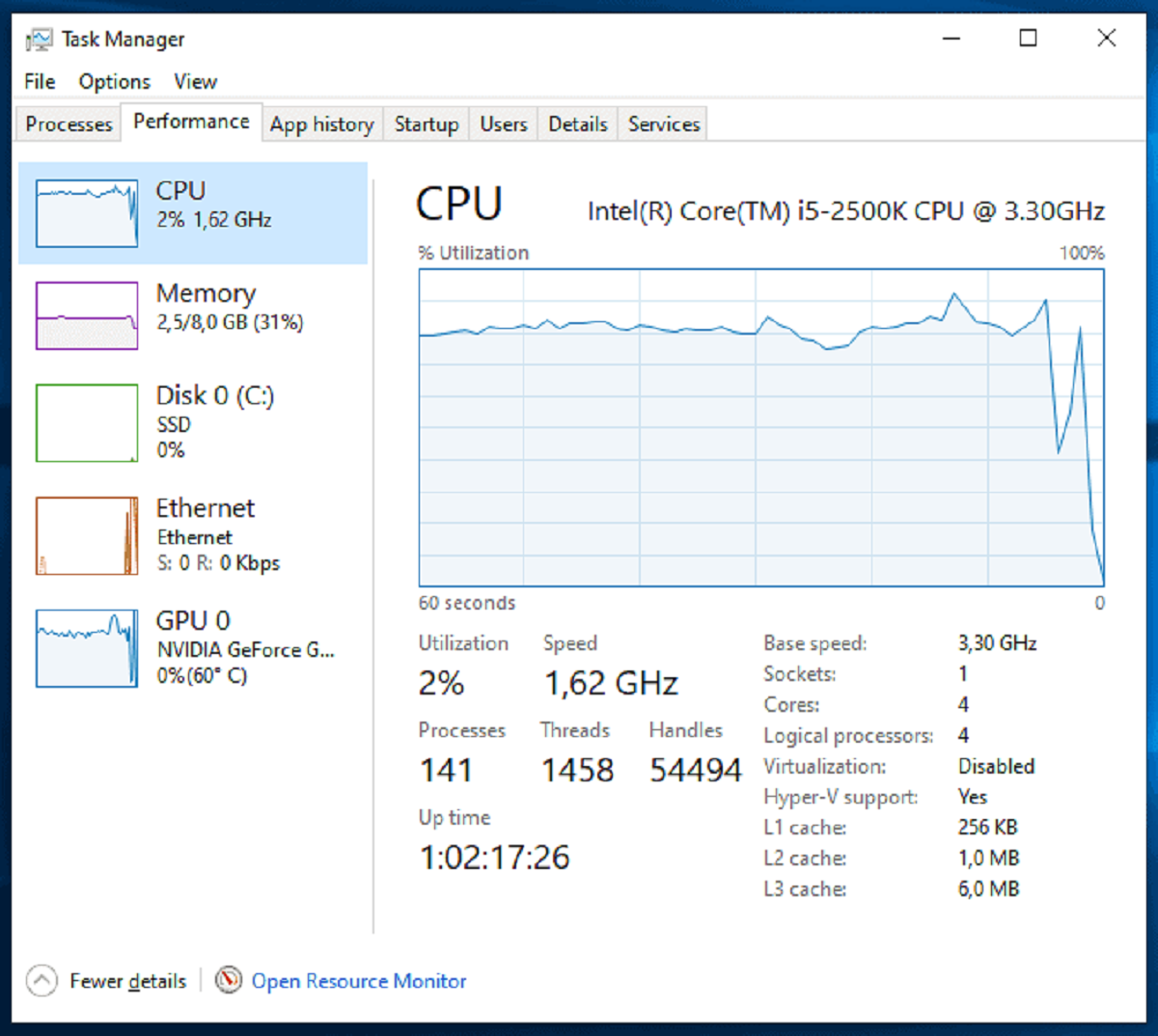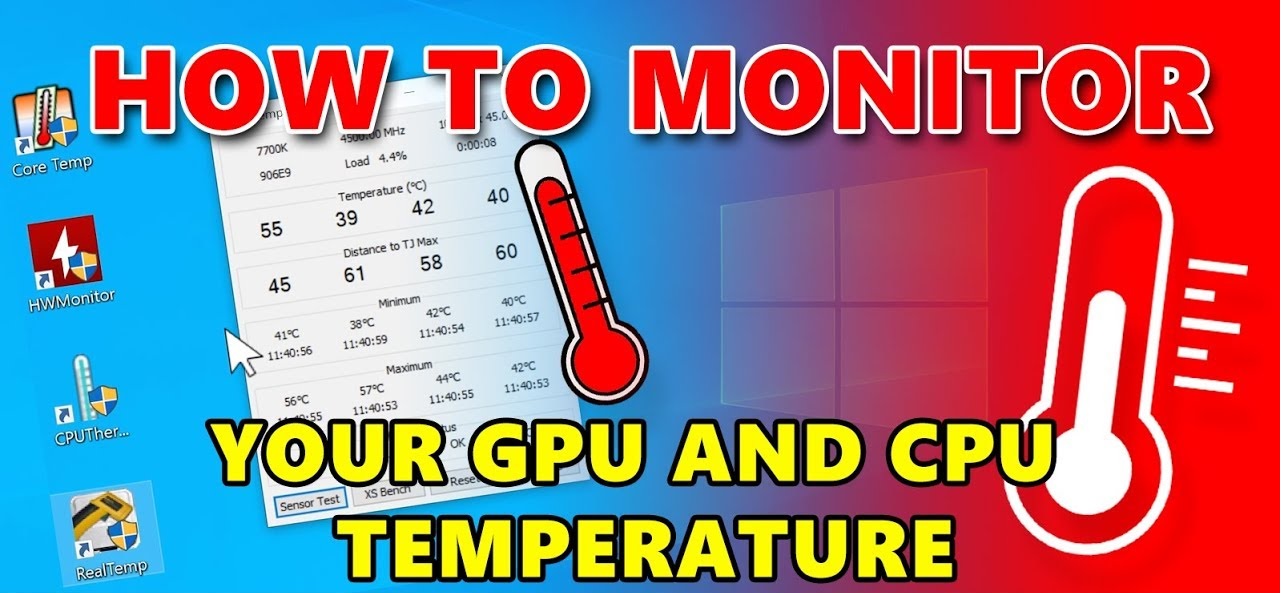Introduction
Welcome to our guide on CPU temperature control and the importance of keeping your CPU temperatures within safe limits. As a computer user, you may already be familiar with the term CPU (Central Processing Unit) – the brain of your computer that performs all the necessary calculations and tasks. However, you may not be aware of the critical role that temperature plays in maintaining the proper functioning and lifespan of your CPU.
When your CPU gets too hot, it can lead to various issues such as system slow-downs, crashes, and even permanent damage. Therefore, monitoring and managing CPU temperatures is essential to ensure the smooth operation of your computer. In this article, we will delve into the safe temperature limits for CPUs, the consequences of overheating, and the various cooling solutions available to keep your CPU cool.
Understanding and controlling CPU temperatures can be especially crucial for tech enthusiasts, gamers, and professionals who rely on high-performance computers. By implementing proper CPU temperature control measures, you can prevent performance degradation, extend the lifespan of your CPU, and avoid costly repairs or replacements.
In the following sections, we’ll explore the factors that influence CPU temperatures, discuss why keeping your CPU cool is so vital, and provide you with practical tips to prevent CPU overheating. So let’s dive in and learn how to keep your CPU running at optimal temperatures!
Importance of Temperature Control for CPUs
Temperature control is crucial for CPUs to ensure their optimal performance and longevity. CPUs generate heat as a byproduct of their processing power, and if this heat is not effectively managed, it can lead to a range of problems.
One of the key reasons why temperature control is important for CPUs is that excessive heat can cause the CPU to throttle, reducing its performance. When a CPU reaches high temperatures, it activates a thermal protection mechanism that decreases its speed to prevent further heat buildup. This means that tasks that would normally be processed quickly may take much longer, resulting in overall system slowdown.
Furthermore, consistent exposure to high temperatures can cause the delicate components within the CPU to degrade over time. Excessive heat can lead to the warping or even melting of circuitry and solder joints, potentially resulting in permanent damage to the CPU. This can render your computer inoperable and can be costly to repair or replace.
Overheating can also cause system instability and unexpected crashes. When a CPU becomes too hot, it can trigger system shutdowns to protect itself from irreversible damage. These sudden shutdowns can result in data loss, disrupted work, and an overall frustrating user experience. By maintaining proper temperature control, you can minimize the risk of these issues and ensure a stable and reliable system.
In addition to the performance and longevity impacts, high CPU temperatures can increase energy consumption and utility bills. CPUs that operate at higher temperatures require more power to function properly, ultimately leading to increased energy usage. By keeping your CPU temperatures in check, you not only benefit your computer’s performance but also contribute to energy efficiency and cost savings.
In summary, temperature control for CPUs is crucial for several reasons. It helps prevent performance degradation, extends the lifespan of the CPU, ensures system stability, minimizes energy consumption, and saves you from potential repair or replacement costs. By implementing effective cooling solutions and monitoring CPU temperatures, you can maintain a healthy and efficient computing environment.
Understanding Safe Temperature Limits for CPUs
Knowing the safe temperature limits for CPUs is essential for proper temperature management. CPUs are designed to operate within specific temperature ranges to ensure optimal performance and prevent damage. These temperature limits can vary depending on the specific CPU model and manufacturer, so it’s crucial to refer to the manufacturer’s specifications for accurate information.
The safe temperature limits for CPUs are typically provided in terms of two values: idle temperature and maximum temperature. The idle temperature refers to the temperature of the CPU when it is not under significant load or stress. On the other hand, the maximum temperature, also known as the TjMax (junction temperature maximum), is the highest temperature that the CPU can safely reach before it starts throttling or experiences potential damage.
For most modern CPUs, idle temperatures typically range from 30 to 50 degrees Celsius (86 to 122 degrees Fahrenheit). These temperatures indicate the normal operating range when the CPU is not under heavy use. However, it’s important to note that idle temperatures can vary depending on factors such as ambient temperature and cooling solutions in place.
The maximum temperature for CPUs can vary widely depending on the specific model. However, as a general guideline, maximum temperatures usually fall within the range of 70 to 100 degrees Celsius (158 to 212 degrees Fahrenheit). Operating the CPU at temperatures closer to the maximum limit for prolonged periods can increase the risk of performance degradation and potential damage.
It’s worth mentioning that while CPUs have built-in safeguards to prevent catastrophic damage, it’s still essential to maintain temperatures well below the maximum limit to ensure optimal performance and longevity. Operating your CPU at temperatures close to the maximum limit for extended periods can lead to reduced lifespan and potential instability.
To accurately monitor CPU temperatures, you can utilize various software tools and utilities that provide real-time temperature readings. These tools allow you to track your CPU temperatures and ensure that they remain within safe limits. Additionally, some BIOS settings and motherboard manufacturers provide the option to set temperature control thresholds and warnings to alert you if temperatures exceed safe levels.
Remember, understanding and adhering to safe temperature limits is crucial to maintain the health and performance of your CPU. By keeping your CPU temperatures within these limits, you can ensure smooth operations, prevent damage, and maximize the lifespan of your CPU.
Factors Influencing CPU Temperatures
Several factors can influence the temperatures at which a CPU operates. Understanding these factors can help you identify potential sources of heat and implement effective cooling solutions to maintain optimal CPU temperatures.
1. Processor Power and Usage: The power and usage of the CPU directly impact its temperature. CPUs with higher power levels and intensive usage, such as during gaming, video editing, or running resource-intensive software, are likely to generate more heat. The more tasks the CPU has to handle, the more heat it will produce.
2. CPU Cooling Solutions: The cooling solutions in place play a significant role in determining the CPU’s temperature. The two common cooling methods for CPUs are air cooling and liquid cooling. Air coolers use heatsinks and fans to dissipate heat, while liquid cooling systems use coolants and radiators to efficiently remove heat from the CPU. The effectiveness of the chosen cooling solution directly impacts the CPU’s temperature.
3. Ambient Temperature: The ambient temperature, or the temperature of the surrounding environment, can impact CPU temperatures. Higher ambient temperatures can make it more challenging for the cooling system to dissipate heat efficiently, resulting in higher CPU temperatures. It’s important to ensure good airflow and ventilation in the room to prevent the build-up of heat around the CPU.
4. Thermal Paste Application: The proper application of thermal paste between the CPU and the CPU cooler is crucial for efficient heat transfer. Thermal paste helps fill in microscopic gaps between the CPU and the cooler, ensuring optimal thermal conductivity. Incorrect or insufficient thermal paste application can lead to poor heat dissipation and higher CPU temperatures.
5. CPU Overclocking: Overclocking refers to running the CPU at a higher speed than its default specifications. While overclocking can provide a performance boost, it also generates more heat. Overclocking can potentially lead to higher CPU temperatures, requiring better cooling solutions to maintain safe operating temperatures.
6. Dust and Dirt Accumulation: Dust and dirt can accumulate on the CPU cooler and obstruct airflow, impeding proper heat dissipation. This accumulation can lead to higher CPU temperatures. Regular cleaning of the CPU cooler and fan can help prevent dust buildup and improve cooling efficiency.
7. Case Design and Airflow: The design and airflow of the computer case can have a significant impact on CPU temperatures. Cases with good cable management, proper placement of fans, and effective airflow patterns can ensure that hot air is efficiently expelled from the case, helping to maintain lower CPU temperatures.
By understanding these factors, you can assess your specific setup and make adjustments as necessary to maintain optimal CPU temperatures. Monitoring and managing these factors can help ensure that your CPU operates within safe temperature ranges, promoting better performance and longevity.
What Temperature is Too High for a CPU?
Knowing what temperature is considered too high for a CPU is crucial for preventing performance degradation and potential damage. While specific temperature thresholds can vary depending on the CPU model and manufacturer, there are some general guidelines to keep in mind.
As a rule of thumb, maintaining CPU temperatures below 80 degrees Celsius (176 degrees Fahrenheit) during heavy usage is recommended for most CPUs. This temperature provides a buffer zone to prevent the CPU from reaching its maximum temperature and triggering thermal protection mechanisms. However, it’s important to refer to the manufacturer’s specifications for the specific maximum temperatures for your CPU model.
Exceeding the maximum temperature of a CPU for extended periods can lead to problems such as thermal throttling, which reduces the CPU’s performance to prevent further heat buildup. This can result in system slowdowns and decreased overall computing capabilities.
While many CPUs are designed to handle temperatures up to 100 degrees Celsius (212 degrees Fahrenheit) without sustaining immediate damage, it’s important to avoid operating near this upper limit for prolonged periods. Consistently running a CPU at or close to the maximum temperature can cause long-term degradation of the CPU’s lifespan and stability.
It’s worth mentioning that some CPUs have lower thermal thresholds due to their architecture or power efficiency considerations. Processors on laptops or low-power devices, for example, may have lower temperature limits. In these cases, it becomes even more crucial to monitor and manage CPU temperatures to avoid potential issues.
Monitoring software, such as CPU temperature monitoring utilities, can provide real-time temperature readings and alerts if temperatures exceed safe thresholds. These tools enable users to keep a close eye on their CPU temperatures and take appropriate action when needed.
If you find that your CPU consistently exceeds safe temperatures during normal use, it may indicate an underlying problem with your cooling solution. In such cases, it’s advisable to check and clean the CPU cooler, ensure proper airflow within the computer case, and potentially consider upgrading your cooling system.
Overall, while the exact temperature limits for CPUs can vary, it’s important to aim for temperatures below 80 degrees Celsius to ensure optimal performance and longevity. By maintaining temperatures within safe limits, you can protect your CPU from potential damage and enjoy a more stable and efficient computing experience.
Consequences of Overheating a CPU
Overheating a CPU can have severe consequences for both its performance and lifespan. Let’s explore some of the potential outcomes of allowing a CPU to operate at high temperatures for extended periods.
1. Reduced Performance: When a CPU overheats, it triggers a mechanism called thermal throttling. This mechanism slows down the CPU’s clock speed to lower its temperature and prevent further overheating. As a result, the CPU’s performance is significantly reduced, leading to slower processing speeds and decreased overall system performance.
2. System Instability and Crashes: Overheating can lead to system instability and frequent crashes. When a CPU becomes too hot, it can generate errors and cause the system to become unstable, resulting in unexpected freezes, blue screens, or even system shut downs. These crashes can lead to data loss, interrupted work, and a frustrating user experience.
3. Reduced Lifespan: Excessive heat is a primary factor contributing to the degradation and reduced lifespan of a CPU. Prolonged exposure to high temperatures can cause the delicate components within the CPU to degrade faster, leading to potential malfunctions and permanent damage. A CPU that consistently operates at high temperatures is more likely to fail prematurely, resulting in the need for costly repairs or replacements.
4. Decreased Reliability: An overheated CPU becomes unreliable, increasing the risk of unexpected system failures and hardware malfunctions. This can be particularly problematic for professionals who rely on their computers for critical tasks, as an overheating CPU can disrupt workflows and jeopardize important projects.
5. Potential Data Loss: As mentioned earlier, system crashes caused by CPU overheating can result in data loss, particularly if the system shuts down abruptly. This can be detrimental, especially for businesses or individuals who have not frequently backed up their data. Losing valuable files and information can have significant consequences and may not be recoverable in some cases.
6. Energy Inefficiency: An overheating CPU typically requires more power to operate, leading to increased energy consumption and higher utility bills. A CPU operating at elevated temperatures for prolonged periods can diminish energy efficiency and have a negative impact on environmental sustainability.
To mitigate these consequences, it’s essential to employ adequate cooling solutions, maintain proper airflow within the computer case, and regularly monitor CPU temperatures. By addressing CPU overheating, you can ensure optimal performance, prolong the lifespan of the CPU, and minimize the risk of system failure and data loss.
Monitoring and Managing CPU Temperatures
Properly monitoring and managing CPU temperatures is key to ensuring the optimal performance and longevity of your CPU. Here are some effective strategies to help you keep track of your CPU temperatures and address any potential issues:
1. Utilize CPU Temperature Monitoring Software: There are several software applications available that allow you to monitor your CPU temperature in real-time. These tools provide accurate readings and often offer customizable settings to set temperature thresholds and receive alerts if temperatures exceed safe levels. Popular options include HWMonitor, Core Temp, and SpeedFan.
2. Check BIOS Temperature Settings: Many computer systems have BIOS options that allow you to monitor and control CPU temperatures. Access your BIOS settings during startup and navigate to the Hardware Monitor or PC Health section. Here, you can find temperature readings and configure temperature-related features specific to your motherboard and CPU.
3. Keep an Eye on CPU Fan Speed: CPU cooling fans play a critical role in maintaining optimal temperatures. Monitor the RPM (Rotations Per Minute) of your CPU fan using monitoring software or BIOS settings. If the fan speed is consistently low or fluctuating, it could indicate a problem with the fan or insufficient cooling. Consider cleaning the fan or replacing it if necessary.
4. Ensure Proper Airflow: Adequate airflow within your computer case is crucial for effective heat dissipation. Ensure that cables are neatly organized to maximize airflow, and check that cooling fans are clear of dust and not blocked by obstructions. Consider adding case fans or upgrading your cooling system if you notice poor airflow or consistently high temperatures.
5. Check CPU Cooler Mounting: Improper CPU cooler installation can result in ineffective heat transfer and higher temperatures. Ensure that your CPU cooler is securely and correctly mounted following the manufacturer’s instructions. Be sure to apply an appropriate amount of thermal paste between the CPU and cooler to facilitate efficient heat transfer.
6. Regularly Clean Your Computer: Dust and debris can accumulate on cooling components, obstructing airflow and leading to elevated temperatures. Regularly clean your computer’s interior, paying particular attention to the CPU cooler and fans. Use compressed air or a soft brush to remove dust and maintain optimal cooling efficiency.
7. Consider Upgrading Cooling Solutions: If you consistently experience high CPU temperatures, consider upgrading your cooling system. This could involve replacing the CPU cooler with a more efficient model or exploring liquid cooling options for enhanced heat dissipation. Ensure that any upgrades are compatible with your CPU and computer case.
By implementing these monitoring and management strategies, you can proactively maintain optimal CPU temperatures, prevent performance issues, and extend the lifespan of your CPU. Regularly monitoring temperatures and promptly addressing any overheating concerns will help ensure a stable and efficient computing experience.
Cooling Solutions for CPUs
Effective cooling solutions are essential for maintaining optimal CPU temperatures and preventing overheating. There are various cooling options available, each with its own advantages and suitability for different scenarios. Let’s explore some of the common cooling solutions for CPUs:
1. Air Cooling: Air cooling is the most common and affordable cooling solution for CPUs. It typically involves a combination of heat sinks and fans. The heat sink absorbs heat from the CPU, and the fan blows air over the heat sink to dissipate the heat. Air coolers come in various sizes and designs, including tower-style coolers and low-profile coolers. They are easy to install and often provide sufficient cooling for most CPUs, making them a popular choice among general users and gamers.
2. Liquid Cooling: Liquid cooling, also known as water cooling, is a more advanced and efficient cooling solution. It utilizes a closed-loop system that circulates liquid coolant through a radiator and CPU water block. The liquid coolant absorbs heat from the CPU and is then cooled by the radiator. Liquid cooling systems generally offer better cooling performance and quieter operation compared to air cooling. They are often favored by enthusiasts, overclockers, and professionals who demand exceptional cooling capabilities.
3. All-in-One (AIO) Liquid Coolers: AIO liquid coolers are pre-assembled liquid cooling systems that are easier to install compared to custom liquid cooling setups. They consist of a pump, radiator, and CPU water block integrated into a single unit, eliminating the need for complex tubing and maintenance. AIO liquid coolers offer the benefits of liquid cooling without the complexity, making them a popular choice for users seeking enhanced cooling performance with ease of installation.
4. Thermal Electric Coolers (TECs): TECs, also known as Peltier coolers, use the Peltier effect to transfer heat away from the CPU. They consist of semiconductor devices that act as both a heater and cooler when an electric current is applied. TECs can provide excellent cooling performance, but they can be power-hungry and require adequate insulation and cooling to prevent condensation and potential damage to the CPU.
5. Fanless Coolers: Fanless coolers, as the name suggests, operate without any fans. They rely on passive cooling methods such as heat pipes and large heatsinks to dissipate heat. Fanless coolers provide silent operation and can be ideal for low-power CPUs or systems that prioritize noise reduction. However, they may not be suitable for high-performance or heavily overclocked CPUs that generate substantial heat.
When choosing a cooling solution for your CPU, consider factors such as your CPU’s power requirements, cooling performance needs, available space in your computer case, and your budget. It’s important to ensure compatibility between the cooling solution and your CPU socket type.
Remember to follow proper installation procedures and consult manufacturer guidelines when installing cooling solutions. Regularly clean the cooling components and monitor CPU temperatures to ensure optimal cooling performance throughout the life of your CPU.
By selecting an appropriate cooling solution and maintaining optimal CPU temperatures, you can maximize system performance, extend the lifespan of your CPU, and prevent potential heat-related issues.
Tips for Preventing CPU Overheating
Preventing CPU overheating is essential for maintaining optimal performance and prolonging the lifespan of your CPU. By implementing these tips, you can effectively manage CPU temperatures and prevent potential heat-related issues:
1. Ensure Proper Ventilation: Proper airflow within your computer case is crucial in dissipating heat. Make sure the case has adequate ventilation with proper intake and exhaust fans. Ensure that the fans are clean and free from obstructions to facilitate optimal airflow.
2. Keep Your Computer Clean: Dust and debris can accumulate on CPU coolers, hindering heat dissipation. Regularly clean your computer, paying attention to CPU cooling components, including fans and heat sinks, to prevent dust buildup. Use compressed air or a soft brush to remove debris gently.
3. Apply Thermal Paste Correctly: When installing or reseating a CPU cooler, ensure that you apply an appropriate layer of thermal paste between the CPU and cooler. Improperly applied or insufficient thermal paste can lead to inadequate heat transfer and potential overheating. Follow manufacturer guidelines for proper application techniques.
4. Keep an Eye on Ambient Temperature: The ambient temperature in the room can impact CPU temperatures. Keep your computer in a cool, well-ventilated room, away from direct sunlight and heat sources. Avoid placing the computer in enclosed spaces without proper airflow.
5. Avoid Overclocking Beyond Safe Limits: Overclocking pushes the CPU beyond its default speed limits, resulting in increased heat generation. If you choose to overclock your CPU, do so cautiously and within its safe limits. Ensure that you have adequate cooling in place to handle the increased heat.
6. Invest in Quality Cooling Solutions: Consider upgrading your CPU cooling solution if you frequently experience high temperatures. Choose a cooling solution that is compatible with your CPU and provides sufficient cooling capacity for your needs. Air coolers, liquid coolers, or all-in-one liquid cooling solutions are popular choices, offering varying levels of cooling performance.
7. Monitor CPU Temperatures: Use monitoring software to keep a close eye on your CPU temperatures. This will help you identify potential issues and take necessary action if temperatures start to rise. Set up alerts to notify you if temperatures exceed safe thresholds.
8. Avoid Blocking Airflow: Ensure that cables and components inside the computer case do not obstruct airflow. Proper cable management and arranging components for optimal airflow can help prevent heat buildup around the CPU.
9. Monitor and Update BIOS: Keep your computer’s BIOS up to date, as manufacturers often release updates that can optimize CPU performance and provide better temperature control. Check the manufacturer’s website for the latest BIOS versions and consider updating if necessary.
10. Consider Undervolting: Undervolting is a technique to lower the voltage supplied to the CPU, reducing power consumption and heat generation. However, undervolting should be done with caution, ensuring stability and compatibility. Consult online resources or seek assistance from experienced users to perform this technique properly.
By following these tips, you can effectively prevent CPU overheating and maintain optimal temperatures for your CPU. Regular monitoring, proper cooling solutions, and a clean and well-ventilated system will help ensure that your CPU operates within safe temperature limits, promoting better performance and longevity.
Conclusion
In conclusion, maintaining proper temperature control for CPUs is crucial for optimal performance, longevity, and the overall health of your computer system. By monitoring and managing CPU temperatures, you can prevent performance degradation, avoid system instability, and maximize the lifespan of your CPU.
We discussed the importance of temperature control for CPUs and the potential consequences of overheating, such as reduced performance, system crashes, and decreased reliability. It’s essential to keep CPU temperatures within safe limits to prevent these issues and avoid costly repairs or replacements.
Understanding the safe temperature limits for CPUs and the factors that influence CPU temperatures is essential. By knowing the acceptable idle and maximum temperatures for your specific CPU and considering factors like processor power, cooling solutions, ambient temperature, and proper thermal paste application, you can work towards maintaining optimal temperatures.
Effective cooling solutions play a vital role in preventing CPU overheating. Air cooling, liquid cooling, all-in-one liquid coolers, fanless coolers, and thermal electric coolers offer various options to suit different needs and budgets. Choosing the right cooling solution, ensuring proper installation, and maintaining good airflow within your computer case are key to achieving efficient heat dissipation.
Furthermore, we provided a range of tips for preventing CPU overheating, such as ensuring proper ventilation, keeping your computer clean, applying thermal paste correctly, monitoring ambient temperature, and avoiding excessive overclocking. These practices will help you proactively manage CPU temperatures and maintain a stable and reliable computing experience.
In conclusion, by following the recommendations outlined in this guide, you can effectively monitor and manage CPU temperatures, prevent overheating, and optimize the performance and lifespan of your CPU. By prioritizing temperature control, you’ll ensure a smooth and efficient computing experience for years to come.







